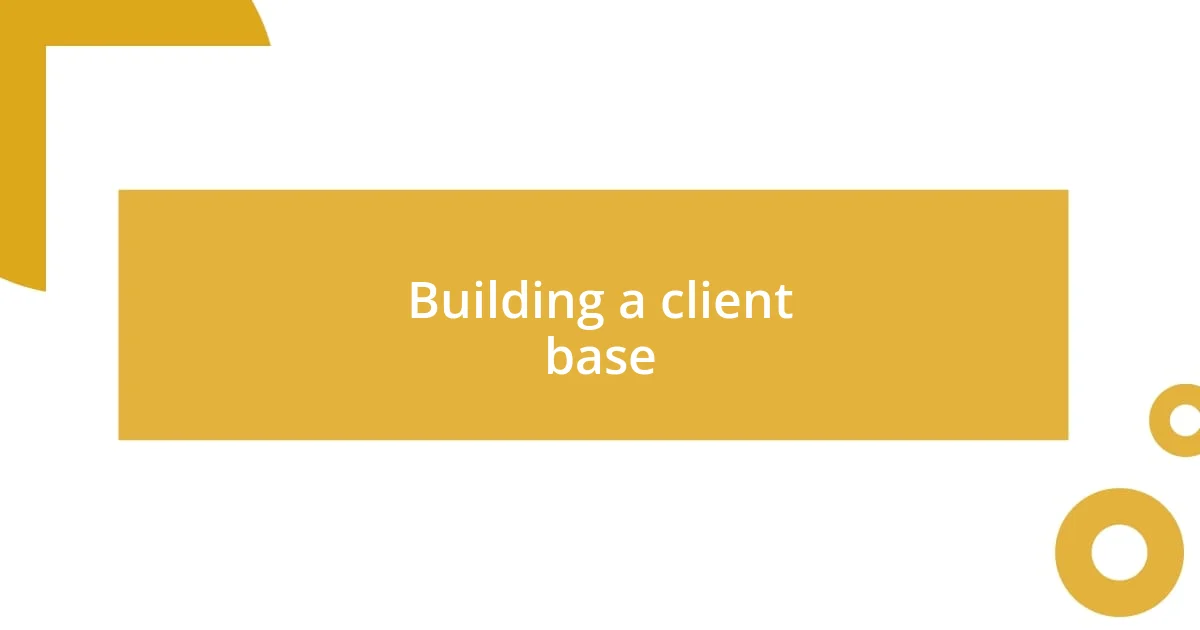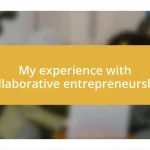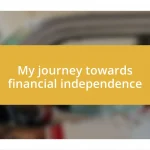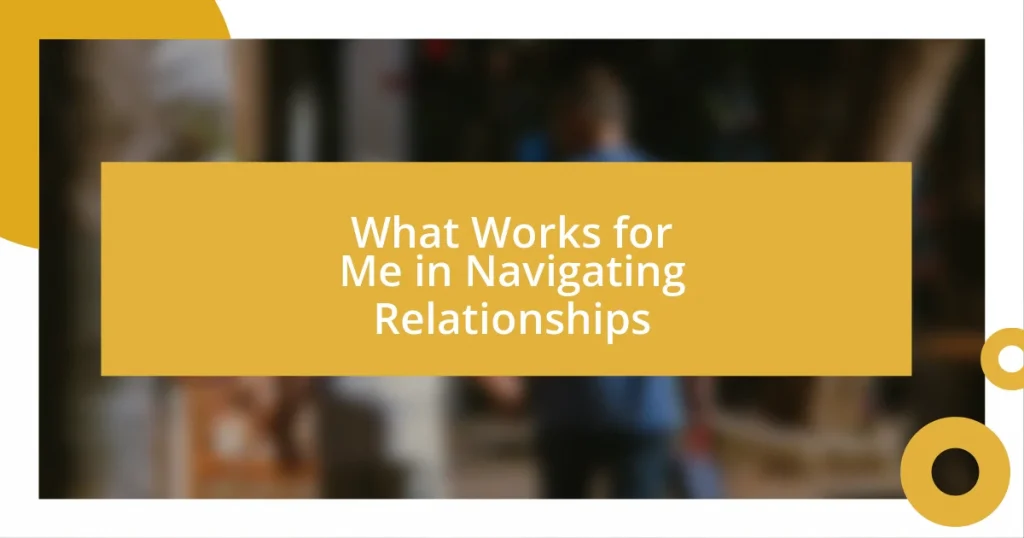Key takeaways:
- Freelancers must develop a solid budgeting framework and cash flow forecasting to manage irregular income and prepare for taxes effectively.
- Building a client base relies heavily on personal connections, networking, and utilizing social media to showcase expertise.
- Establishing fair pricing strategies involves understanding one’s value, incorporating competitive analysis, and utilizing value-based pricing for better client relationships.

Understanding freelance financial planning
Freelance financial planning is a unique challenge, as it requires a mix of self-discipline and creativity. When I first started freelancing, the irregular income was daunting. I remember sitting at my kitchen table, overwhelmed and asking myself, “How do I ensure that I can pay my bills every month?” It became clear that I needed a solid framework to manage my finances.
Creating a budget became my lifeline. I learned to categorize my expenses not just into necessities and luxuries but also by seasonal fluctuations. For instance, I noticed that my workload would spike before the holidays, which meant I needed to save during lean months. This realization illuminated the importance of cash flow forecasting for freelancers—if I hadn’t taken the time to analyze my financial patterns, I wouldn’t have been prepared for those dry spells.
Another critical aspect of freelance financial planning is setting aside money for taxes. The first time I faced tax season was nerve-wracking; I felt like I was walking a tightrope. I never considered that I would need to save a portion of my earnings throughout the year! By establishing a separate savings account designated for taxes, I’ve developed a buffer that alleviates that anxiety. Are you currently managing your savings effectively, or do you find it overwhelming, like I once did? I encourage you to think about how organizing your finances can bring peace of mind.

My motivations for freelancing
Freelancing for me has been driven by a desire for independence. I vividly recall the day I decided to leave my 9-to-5 job. It felt like breaking free from a cage; I wanted to shape my own schedule and choose my projects. That moment ignited a passion for working on my own terms.
- The flexibility to work from anywhere.
- The ability to choose clients and projects aligned with my values.
- A promise of a work-life balance I’ve always craved.
In addition, financial success played a significant role in my motivation. I remember the excitement of earning my first substantial freelance paycheck. It wasn’t just about the money; it was a validation of my skills and worth. Each project I completed brought not only financial rewards but also deep satisfaction. Those moments, when I look at my bank account and see the fruits of my labor, push me to continuously improve my craft and strive for new heights in my career.

Building a client base
Building a client base as a freelance financial planner can feel like an uphill battle at first. I remember reaching out to friends and family, nervously pitching my services. Surprisingly, they became my first clients. This initial leap taught me that personal connections could be my greatest assets; who better to trust with finances than someone who knows you?
As I ventured further, I utilized social media to expand my reach and promote my services. Platforms like LinkedIn became invaluable for showcasing my expertise. I recall the thrill of connecting with an old colleague who referred me to a small business owner, leading to my first corporate client. It reinforced the idea that every interaction matters; you never know where your next opportunity may come from.
Networking events also played a crucial role in building my client base. Each conversation was an opportunity to learn, share, and create lasting impressions. I still remember a casual chat over coffee that evolved into discussing financial strategies, ultimately turning into a long-term client relationship. It highlighted the importance of genuine connections, rather than just making a sale; people appreciate authenticity.
| Client Acquisition Method | Experience |
|---|---|
| Personal Connections | First clients gained from friends and family, proving trust is vital. |
| Social Media | Used LinkedIn to connect and showcase expertise, leading to corporate opportunities. |
| Networking Events | Genuine conversations at events can lead to long-term client relationships. |

Setting fair pricing strategies
Setting fair pricing strategies in freelance financial planning can be a balancing act, and I’ve learned this through trial and error. I remember the first time I set my rates; I felt anxious about whether I was charging too much or not enough. It dawned on me that understanding my worth and the value I bring to clients was crucial. A good pricing strategy isn’t just about covering expenses; it’s also about respecting your expertise and time.
I often reflect on a project where I underpriced my services, motivated by the eagerness to secure a client. The initial joy quickly turned to regret when I realized the amount of work involved didn’t align with what I was being paid. Have you ever felt that pang of disappointment after realizing you didn’t get what you deserved? From that experience, I learned about competitive analysis. Researching what other freelancers in my niche charged helped me find a sweet spot that felt both fair to clients and rewarding for me.
Now, I incorporate value-based pricing into my strategy. This approach allows me to charge based on the outcome my clients achieve rather than the hours I spend. For instance, when planning for a small business, I align my fees with their projected financial gains, fostering a win-win scenario. By using this strategy, I can confidently communicate to clients that my services are an investment, not just an expense. It’s empowering to watch their surprise and appreciation when they see the tangible benefits of our partnership. How rewarding is it to know that your work directly contributes to someone’s success?

Managing client relationships
Managing client relationships in freelance financial planning requires a delicate balance of professionalism and personal touch. I’ve found that taking the time to truly understand a client’s goals makes all the difference. For instance, during a consultation, a client once shared her long-term dream of funding her child’s education. This simple conversation shifted the focus from merely balancing her budget to creating a tailored financial roadmap. Isn’t it amazing how getting to know someone personally can transform the nature of the relationship?
Regular communication is key to maintaining these relationships. I ensure I check in with my clients, not just when they need services, but also to share relevant insights or market trends. Once, I discovered a new investment opportunity that aligned perfectly with one client’s risk appetite. When I reached out, their excitement about the potential return reinforced my belief in being proactive. After all, who doesn’t appreciate a planner who looks out for their best interests?
Building trust is at the core of client relationships. I remember a client who was initially skeptical about my recommendations due to past experiences with financial advisors. By consistently delivering results and being transparent about my processes, I gradually broke down those barriers. There’s something incredibly rewarding about witnessing that shift from wariness to trust. Have you ever experienced that moment when someone starts to see you as a partner in their financial journey? It’s those moments that make this work so fulfilling for me.

Tools for efficient financial planning
Effective tools are essential for efficient financial planning, and I’ve discovered several that truly elevate my practice. One standout is personal finance software, which streamlines budgeting and forecasting. I distinctly remember using one such tool for a client who was overwhelmed by her financial situation. By inputting her data, we created visualizations that transformed complex numbers into a clear roadmap. Have you ever experienced the relief of seeing a daunting task simplified? It’s liberating!
Spreadsheets are another invaluable asset in my toolkit. While they may seem basic, I often customize them to suit specific client needs, such as tracking expenses or projecting retirement savings. Recently, I crafted a detailed spreadsheet for a couple aiming to buy their first home. The moment they saw their saving milestones laid out clearly, their anxiety shifted to excitement. It’s fascinating how these simple, yet powerful, tools can ignite hope and commitment towards achieving financial goals.
Lastly, I can’t overlook the importance of communication platforms. Whether it’s video calls or secure messaging, these tools enhance collaboration and build rapport with clients. I remember a situation where a quick virtual meeting resolved a misunderstanding and reaffirmed a client’s trust in me. Isn’t it intriguing how technology can bridge gaps that once felt impassable? It’s moments like these that reinforce my belief in using the right tools to nurture relationships and foster impactful financial planning.

Lessons learned from my journey
Through my journey in freelance financial planning, one significant lesson learned is the importance of adaptability. There was a project where, halfway through, the client’s financial situation changed drastically due to an unexpected job loss. Instead of sticking rigidly to the initial plan, I pivoted, creating a new strategy that emphasized immediate savings and alternative income sources. Isn’t it fascinating how we can find creative solutions when faced with challenges?
Another vital lesson revolves around the significance of self-care. I once took on too many clients at once, thinking it would boost my earnings. However, I quickly learned that burnout isn’t just a personal concern; it can also affect the quality of service I provide. Now, I consciously schedule time for myself to recharge. Have you ever pushed yourself too far only to realize you weren’t giving your best? It reminds me that, in this field, taking care of ourselves ensures we can be fully present for our clients.
Finally, the power of continuous learning has been a game changer. In my early days, I assumed once I had the basics down, I was set. But attending workshops and webinars opened my eyes to emerging trends and strategies. I recall the excitement of learning about sustainable investing and how I could incorporate it into client portfolios. Doesn’t it feel invigorating to expand your knowledge and, in turn, enhance the services you offer? Embracing lifelong learning has not only improved my practice but has also deepened my engagement with the clients I serve.














